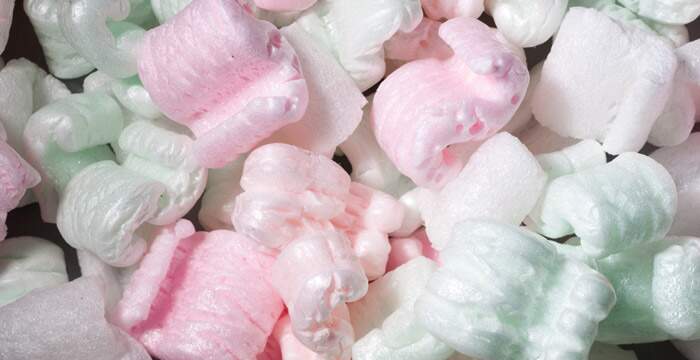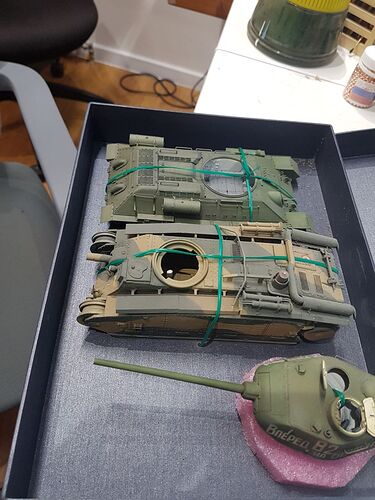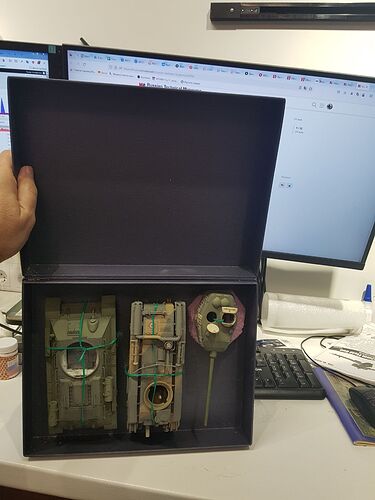Since I will be entering in my first model contest this upcoming weekend, I need some advice on how to bring the model. I will be going by car, so just holding the model is not viable. I was thinking of putting it in a box, but am afraid that the fragile pieces on the sides will bump up against the sides and snap. Would I need some sort of padding/bracing int he box? The model is a 1:35 Sdkfz. 251/8, for size/fragile detail reference.
I transport mine to contests in a plastic crate with a towel in the bottom to keep them from sliding around. I usually have no issues, unless a short stop causes the crate to slide forward quickly or something like that. Even then, the damage has been very minimal (popped off door, broken antenna, etc.
I had not thought of that, what options are there to provide padding on the sides to minimize damage?
I use an oversized towel that comes up the sides a bit. As long as you drive normally, the sides are not an issue as they don’t really move on the towel. It is only an issue in short stops or other maneuvers that make the crate slide violently. I also sort of fluff/fold the towel so it makes a depression that the kit sits in to help it stay in place.
I would also have a top on the container. Ruined the finish on a KV-1 from rain drops.
When I moved,I used the stuffing they sell at craft stores like Hobby Lobby to stuff pillows and toys,looks like cotton candy,it worked for my long distance move so it should work for needs also.
There is usually some areas of the model that are less fragile than the others.
Cut a model-shaped hole in styrofoam or similar material, make cut-outs around fragile details.
Use strips of paper as sliding surfaces between the model and the styrofoam.
If you split the styrofoam into two or more pieces you don’t need to slide the model in/out of the hole.
Place towel or similar on the bottom of a large enough box, not strictly necessary but it provides some chock absorbtion.
Position the model. Insert styrofoam blocks left/right/front/rear (depending on how You chose to divide the styrofoam) until the model is locked in place.
Use one or two shaped styrofoam blocks to prevent the model from jumping. These blocks rest on top of the side blocks and barely touches the top of the model, at a non fragile area. The lid of the box will prevent these “hold-downs” from moving upwards. This allows space for antennas and fragile parts on the top and prevents them from being crushed.
The side blocks can also be cut with a margin and then you can pad the remaining space with packing “peanuts”, just stay away from fragile areas.
These are soft and will compress slightly to hold the model gently but firmly.
Plastic storage boxes, preferably with lid fasteners, can be used.
Just one example:

Link to Walmart
That type of box-system usually has boxes in several different sizes, the bigger ones will fit more models but take up a lot of space.
Note that the method described above is primarily for trucks, cars, model railroad, armour and similar.
It will also work, with some adaptations, for ships. The tricky part is to hold the ship down, especially sailing ships.
Aircraft usually benfit from hanging by the wings to protect potentially fragile landing gear.
Same basic principle: blocks under the wings, tail area and the fuselage. Blocks from above as hold downs. Blocks touching fuselage sides to prevent sideways movement.
+1 on Robin’s method (@Uncle-Heavy)!
I’d only add that when you look to buy a transpo box, be sure that it’s deep enough to accommodate the antennas on your model. An extra inch or so is advisable to allow for the inevitable model “jumps” inside the box caused by bumps in the road.
(Ask me how I know this!! LOL!)
Write your name on the box lid in permanent marker, and understand that at most model shows, you’ll be able to store the transpo box under the display table (below your model). That way you don’t need to schlep your box back to the car while the show is going on. Another tip is that if you have more than one model, you can dump the packing peanuts into one box and then nest the others into it for storing under the display tables (so you’re not taking up too much space).
Any filler in the box with the model will break off small parts from the model when shaken. Most likely they will fly off on their own sooner or later, but our task is to ensure integrity during transportation. It is necessary to ensure the immobility of the model in the box so that it does not come into contact with the walls, or with other models, or with the filler.
My way: screw it to the bottom of the box with a wire. This is a controlled process: you know your model, you know where it is stronger. There and fasten with wire.
When I moved, I packed all my models this way. Road transportation for 2000 kilometers caused almost no damage.
I hope the principle is clear from the photo.
In this photo, I’m holding the box upright and nothing happens. I can even turn it over or shake it.
Yuri’s ( @fromSalekhard ) method is excellent as long as the tie-down strings/wires can be placed at a non-fragile area.
Some models can have weak wheels, road-wheels, axles et.c.
In these cases the bottom of the vehicle can be supported by a styrofoam block so that there is a millimeter or two (or 1/16 of an inch) space between the wheels/tracks and the bottom of the box.
Yes, that is why there is a piece of foam rubber under the turret: there are parts protruding downward.
I used a similar method to transport three models all the way to Japan. I put them in cardboard boxes and secured them to the bottom of the box with twist ties. I didn’t put them over the models though - I simply secured them by their tracks though holes in the bottom of the box. I took the box onto the plane and the models made it safely there and back - minus one that I left there in Shizuoka City.
I use foam insulation that is used when installing room air conditioners. Relatively inexpensive and comes in different widths. Popcorn foam works well and I used to use it but the foam pieces tend to get everywhere.
The one thing not mentioned is to make sure the box is firmly wedged in the trunk (or back seat) to keep it from sliding around!
Have you flown lately? That box was wedged in all right.
I’ve used everyone’s tips that are in this thread. They all work, you just have to figure out what will work for your particular model. There isn’t a one-size-fits-all; at least that I know of. A couple of things to watch out for:
- the towel needs to be lint free,
- the styrofoam peanuts can have static charges and the really small particles will stick to your model and will be hard to remove if you’re in a hurry.
My tips: bring a really good brush with you to brush away any dust that may have gotten on your model and I sometimes loosely wrap my model in clear wrap just be careful when removing so it doesn’t snag on an antenna.
A box is a must. I use whatever free stickers I can get from local restaraunts, etc. and stick them on my plastic boxes so I know which boxes are mine. Good luck.
The model in question has a roof prone to caving in with pressure, but I can look into this method as well. Maybe a wire frame to cage the model in would work well.
would buckling it in the front seat be an alright idea? that’s to keep an eye on the model/
One thing I learned early on with survey equipment, if it can fall it will. Same thing applies to models I transport. They go on the floor. I don’t have an issue with them sliding around as I have rubber mats but you have a towel etc around the box to prevent slipping if needed.
Thank you, that makes sense. The floor mats in my car are rubber, so it shouldn’t be a problem.



